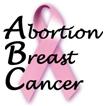School Board Puts Students at Risk for Cancer
School Board's Decision in Willamina, Oregon Will Put Students at Risk for Three Cancers
In 2005, World Health Organization (WHO) scientists assigned estrogen plus progestin (combined) hormonal contraceptives (the pill) and combined hormone replacement therapy (HRT) the highest level of carcinogenicity - Group 1. 1
"But that's not stopping the Willamina High school board (Willamina, Oregon)," said Karen Malec, president of the Coalition on Abortion/Breast Cancer. "According to a news report last week, the school board authorized a nurse practitioner to prescribe the pill for teens during the most cancer-susceptible time of their lives (before first full term pregnancy)." 2
WHO scientists said combined hormonal contraceptives (HCs) increase women's risks for cancers of the breast, cervix and liver, and they decrease the risks of ovarian and endometrial cancers.
"More than twice as many American women die every year from the first three cancers than the last two, but some health officials foolishly tell women to take a carcinogen - the pill - to prevent cancer!" said Malec.
WHO scientists said, "Most combined contraceptives are taken orally, but they can also be delivered by injection, transdermal patch or vaginal ring." 1 These drugs are also found in the IUD.
In 2006, reviews in the Mayo Clinic Proceedings and the New England Journal of Medicine implicated combined HCs as a risk factor for breast cancer. 3 4
Combined HRT and combined HCs contain the same type of drugs, but HCs have a larger dose. Women often use HCs before a first full term pregnancy when most of the breast is composed of cancer-susceptible Type 1 and 2 lobules where 97% of all breast cancers start. 5
Theoretically, the progestin-only mini pill may cause breast cancer too. In the female body, estrogen peaks in mid-cycle stimulating ovulation and again in the luteal phase of the menstrual cycle. Those who take the progestin-only mini pill are exposing themselves to combined hormones, estrogen and progestin.
"I urge school officials to read Irma and Jose Russo's research concerning estrogen and breast maturity and the Breast Cancer Prevention Institute's analyses of their work," said Malec. 6 7 8
The Coalition on Abortion/Breast Cancer is an international women's organization founded to protect the health and save the lives of women by educating and providing information on abortion as a risk factor for breast cancer.
- 1. a. b. Cogliano V, Grosse Y, Baan R, Secretan B, El Ghissassi F. Carcinogenicity of combined oestrogen-progestagen contraceptives and menopausal treatment. Lancet Oncology 2005;6:552-553.
- 2. "High school will prescribe birth control. School board combating large number of student pregnancies." Fox 12 Oregon, May 13, 2009. Available at: http://www.kptv.com/health/19454731/detail.html
- 3. Kahlenborn C, Modugno F. Potter D, Severs W. Oral contraceptive use as a risk factor for premenopausal breast cancer: A meta-analysis. Mayo Clinic Proceedings 2006;81(10):1290-1302. Available at: http://www.mayoclinicproceedings.com/pdf/8110/8110a1.pdf.
- 4. Yager JD et al. Estrogen Carcinogenesis in Breast Cancer. N Engl J Med 2006;354:270-82.
- 5. "Breast Cancer Risks and Prevention," booklet. Breast Cancer Prevention Institute. Available at: http://www.bcpinstitute.org/booklet4.htm.
- 6. Russo J and Russo H. Development of the human mammary gland, The Mammary Gland. Eds. Neville and Daniel, Plenum Publishing Corporation, 1987.
- 7. Lanfranchi A. The breast physiology and the epidemiology of the abortion breast cancer link. Imago Hominis 2005;12(3): 228-236.
- 8. Brind J. The abortion-breast cancer connection. National Catholic Bioethics Quarterly Summer 2005; p. 303-329.



